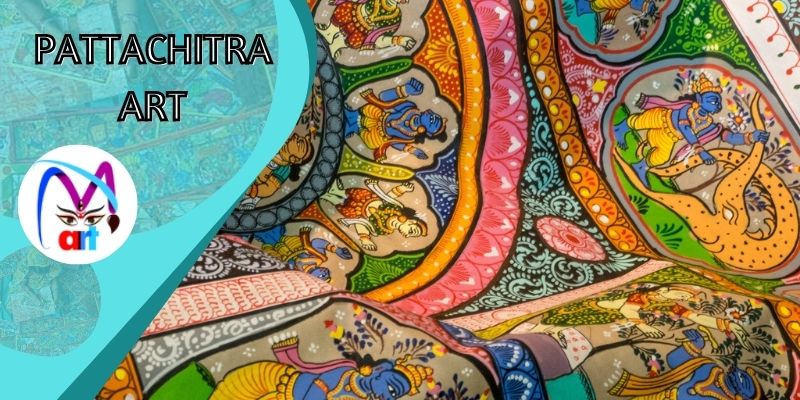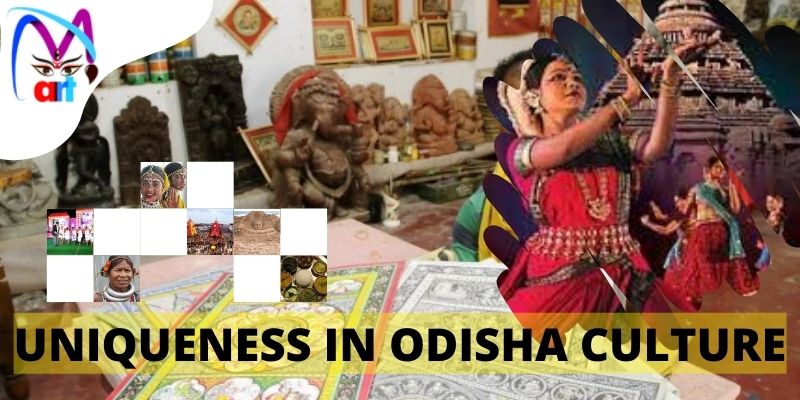Pattachitra Art: Its Origin and Evolution

A Beginner’s Guide to Enjoy Odisha Tourism
May 3, 2022
Key Festivities of the Famous Rath Yatra
May 17, 2022One of the oldest forms of storytelling in the world is the paintings, and pattachitra art is one of the oldest forms of the art form. Earlier, people used this art style to depict the images of Hindu mythological stories and amazing characters. A usual pattachitra art features distinctive bold colours and Italian craftsmanship. If you are someone who wants to incorporate a distinct piece of Indian art into your home space, that is nothing better to choose than a pattachitra painting.
The pattachitra painting depicts the uniqueness of Odisha culture, Indian customs, rituals and values distinctly and beautifully. Thus, it celebrates the Hindu religion and faith. Traditional art has evolved and appeared in accessories and clothing, thereby becoming living or that you can incorporate into your daily life. People exploring Odisha tourism are fascinated by this unique and indigenous art form. Now let us see how did the artform originate:
The origin of Pattachitra paintings
One can find the original story of patachitra paintings covered in mythology and legends. It is closely linked with the story of Lord Jagannath. On the full moon of May or June, also known as the birthday of the lord, the deities from the temple get a ceremonial bath. This process keeps away the summer heat.
- Snana Purnima
During this ritual, lakhs of people witness the procession of bathing. Also known as ‘’Snana Yatra,’’ the priests do a ceremonial path through the process to Lord Jagannath and his brother and sister. As a result of this bath, the three deities develop a fever that continues to last for 15 days, known as ‘’nasar’’ For these 15 days, devotees do not see their god
- Shri Ganesha Lakshmi Yantra
Originally, the paintings emerged of these three deities
It gives devotees a means to worship them when they cannot see the idols for the 15 days following the bath. Before becoming known earlier, this art style was called annasar Patti honouring the 15 days of seclusion.
Meaning of Pattachitra
The word ‘’attachitra’’means cloth painting and comes from the two words ‘’pata’’ and ‘’Chitra’’ Also known as scroll painting, artists usually carry out the art form on cloth. Actually, pattachitra paintings came from Odisha in the 5th century. However, the earliest records of Pattachitra art come from a village of Puri called Raghurajpur. Even today, Pattachitra art is popular in this region. The craftsmen behind this artform are popularly known as ‘’Maharanas’’and ‘’Mohapatras.’’
Originally King Narasingha Deva 1 of the 13th century eastern Ganga Dynasty established Puri. The artists in this village trace the origin bags to the savar or hunter tribe.
- Lord Venkateshwara with Kirtimukha
The artists originally got the inspiration to make pattachitra paintings from temples and architecture around Odisha. They spoke about the stories of villages through the paintings as they narrated the stories through detailed paintwork. They originally used the scroll paintings for ritual purposes and gave them souvenirs to pilgrims heading for Puri and temples in Odisha.
People worldwide gave Jagannath and Vaishnavas tribes the credit of being the early patrons of the art forms. However, the primary source of paintings for the painters was Hindu gods like Krishna, Shiva, and Hanumana. Hindu goddesses like Sita and Parvati also appear in the stories.
- Pattachitra painting’s story in West Bengal
While these paintings originated in Odisha, it is also popular across the state of West Bengal. The major difference between paintings made in Odisha is that artists in the former state use cotton fabrics, while in West Bengal, they use silk. In the state of West Bengal, people used the paintings as a visual help during the performance of musical pieces and songs.
The signature style of Pattachitra paintings
The pattachitra painting is so easy and distinctive to spot in how the partitions behind the paintings blend the signature elements of classical and fox stories. However, the overarching feeling will always be inclined toward mythology and stories, inspiring the stories captured in the paintings. Moreover, they also have a classical feel to them.
Amongst pattachitra paintings, you can also spot Mughal influences that painters have incorporated into apparel and accessories. These paintings also have distinctive dark lines with natural colours and dyes naturally derived from fruits and vegetables.
Pattachitra paintings and apparel
Fashion is a form of living art, making it no surprise that Pattachitra art has found its way into beautiful saree designs. Typically, people incorporate these paintings into saris made using silk and cotton textiles. Adding Pattachitra paintings is a beautiful way of giving the usual traditional saris a refresh and making them feel traditional and contemporary.
In apparel, artists incorporate pattachitra paintings and use bright uses to give the clothing a spirited colour palette. Moreover, it also narrates the stories in jewel-tone hues. While Pattachitra paintings are becoming increasingly popular for sarees, one can also see them in everyday accessories such as household items.
Conclusion
Today, Pattachitra art is registered under two different names based on its origin. The one styled after the tradition and motifs of Odisha art is referred to as ‘’Disha Pattachitra’’ while its West Bengal counterpart is known as ‘’Bengal Patachitra.’’
Traditionally, the colours used for making Pattachitra paintings are natural. Therefore, natural powder and everything from stones and green leaves is used to bring more vibrant colours.
Are you looking to buy Pattachitra art? Art Minakhi is your answer. Here we celebrate the connection of the Divine power and reinforce it via different art forms. We sell a wide range of handmade art made with watercolours, oil colours, acrylic colours and fabric colours on canvas and cloth. We try to bridge the tropical world with thought leaders through our work, thus bringing ecological sustainability to the forefront. Our skilled artisans are equipped with years of experience, and thus we produce abstract paintings, clay paintings, and many more. You can check all our items by our talented artisans and artists at https://www.etsy.com/shop/ArtMinakshi
For any query, you can call us at 8984374826 or email us at artminakshi49@gmail.com.




